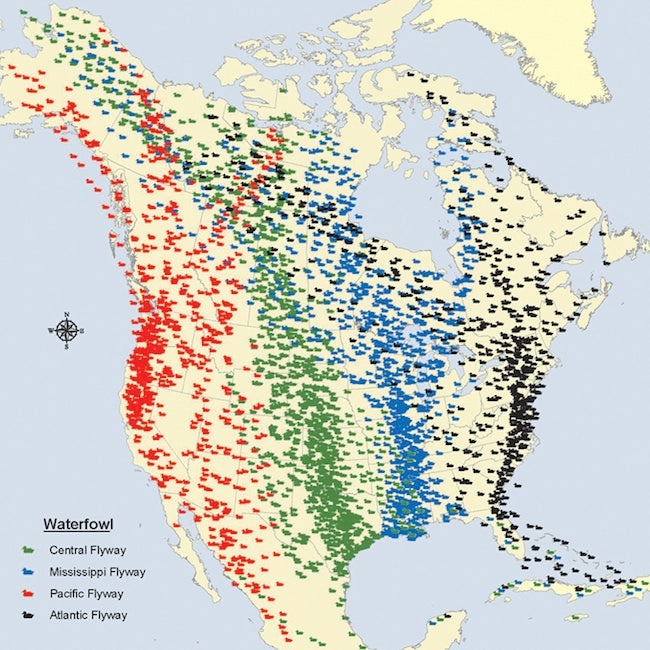Offer
Provide additional details about the offer you're running.
Provide additional details about the offer you're running.
Provide additional details about the offer you're running.

As more and more studies have been performed, it has been found that each migratory species of bird typically has its very own route between its nesting and winter ranges. At one time it was believed that birds tended to follow specific flyways all the way to their final destination, but recent research has shown that migrating songbirds tend to fly across a more broad area and are not always tightly grouped into specific flyways.
Never the less, these flyways were developed to help ornithologists track the yearly migrations of a wide variety of migratory birds, and even though some routes can vary, these flyways serve as a great reference point for tracking birds in transit.
Here is how the flyways are broken down:
Atlantic Flyway
This flyway encompasses a large number of primary migration routes and is of great importance to migrating waterfowl. The reasoning behind this is the flyways proximity to the water, as it tends to follow the Atlantic Ocean shoreline down the eastern United States. The Atlantic flyway extends from the offshore waters of the Atlantic Coast, moving west toward the Allegheny Mountains, curving its way up through West Virginia and heading up through the Canadian prairies, North West Territories and the Arctic Coast of Alaska.
Mississippi Flyway
The Mississippi flyway holds the longest migration route in the Western Hemisphere, but for the most part can be a fairly smooth route for most migrating birds. For more than 3000 miles of this flyway, this route remains uninterrupted by mountains, its greatest elevation above sea level sitting at less than 2000 feet. This large flyway encompasses a large span of land, stretching from the Arctic Coast of Alaska all the way down to its southern tail in Patagonia, following the Mississippi River loosely as it travels through most of the United States.
Central Flyway
Perhaps the narrowest flyway, the Central Flyway closely follows the eastern base of the Rocky Mountains down through Canada and then heads toward the east, eventually merging with the Mississippi Flyway and heading down the eastern coast of Mexico. The travel patterns along this flyway are typically that of a simple nature, as birds simply follow a strict north to south (and vise versa) travel route.
Pacific Flyway
This flyway is often used by a large number of gulls, ducks, and other water birds, again given its close proximity to the Pacific Ocean. The territory comprising this flyway contains the western Arctic coast, along with the Rocky Mountain and Pacific Coastal regions of Canada, the United States and Mexico eventually heading south into Central and South America.
These flyways are a crucial step in the future conservation and protection of our migratory birds, as these studies can help us all better understand the major migration corridors and where their critical habitat locations exist. Remember, your birds may seem safe while spending the summer months in your backyard, but we all need to do our part and protect their habitat used in many other parts of the world as they embark on their spring and fall migrations.
High Quality Blend